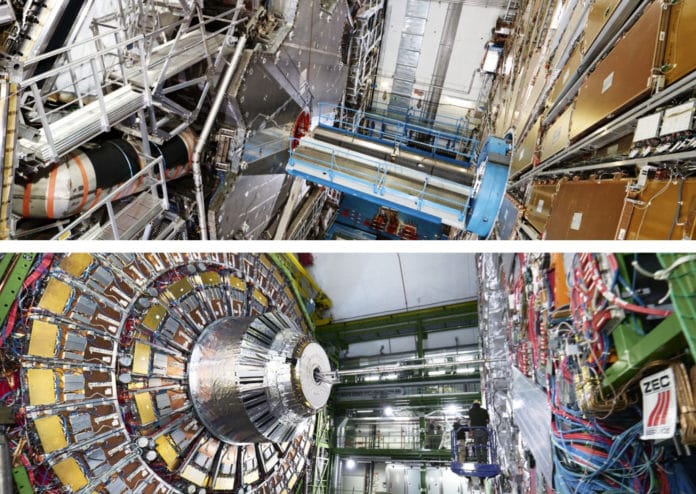On July 4, 2012, the ATLAS and CMS collaborations at the Large Hadron Collider (LHC) announced the discovery of a particle called Higgs boson. The discovery proved a breakthrough in science’s history and captured the world’s attention. Now, ten years after the discovery, the international ATLAS and CMS collaborations at the Large Hadron Collider (LHC) report the results of their most comprehensive studies yet of the properties of this unique particle.
The results, published in two different papers, show that the particle’s properties are remarkably consistent with those of the Higgs boson predicted by the Standard Model of particle physics. The papers also show- how the particle is being used in searching for new, unknown phenomena that could help shed light on some of the biggest mysteries of physics.
ATLAS and CMS combine various complementary processes in which the Higgs boson is created and “decays” into other particles to fully exploit the potential of the LHC data for the study of the Higgs boson, including its interactions with other particles.
The collaborations used their complete LHC Run 2 data sets. Each set includes more than 10,000 trillion proton-proton collisions and about 8 million Higgs bosons – 30 times more than at the time of the particle’s discovery.
To produce the most accurate and comprehensive set of measurements of Higgs boson production and decay rates and the strengths of the Higgs boson’s interactions with other particles to date, the new studies combine an unprecedented number and variety of Higgs boson production and decay processes.
Within a range of uncertainties that are based, among other things, on the abundance of a particular process, all of the data are strikingly compatible with the Standard Model’s predictions. An uncertainty of 6% is achieved for the Higgs boson’s interaction strength with the weak force carriers. Comparatively, a similar analysis using the whole Run 1 data sets produced uncertainty for that interaction strength of 15%.
ATLAS spokesperson Andreas Hoecker said, “After just ten years of Higgs boson exploration at the LHC, the ATLAS and CMS experiments have provided a detailed map of its interactions with force carriers and matter particles. The Higgs sector is directly connected with very profound questions related to the evolution of the early universe and its stability and the striking mass pattern of matter particles. The Higgs boson discovery has sparked an exciting, deep, and broad experimental effort that will extend throughout the full LHC program.”
CMS spokesperson Luca Malgeri said, “Sketching such a portrait of the Higgs boson this early on was unthinkable before the LHC started operating. The reasons for this achievement are manifold and include the exceptional performances of the LHC and the ATLAS and CMS detectors and the ingenious data analysis techniques employed.”
The results also offer stringent bounds on the Higgs boson’s interaction with itself and on new, unknown phenomena beyond the Standard Model, such as on Higgs boson decays into invisible particles that may make up dark matter.
Journal Reference:
- The CMS Collaboration. A portrait of the Higgs boson by the CMS experiment ten years after the discovery. Nature (2022). DOI: 10.1038/s41586-022-04892-x
- The ATLAS Collaboration, A detailed map of Higgs boson interactions by the ATLAS experiment ten years after the discovery, Nature (2022). DOI: 10.1038/s41586-022-04893-w
